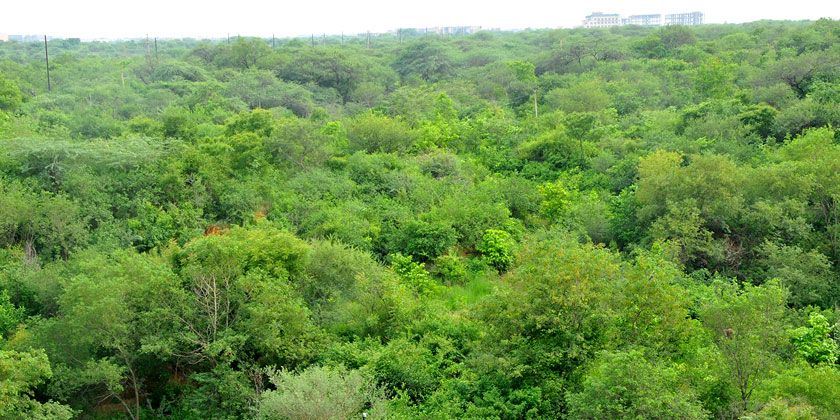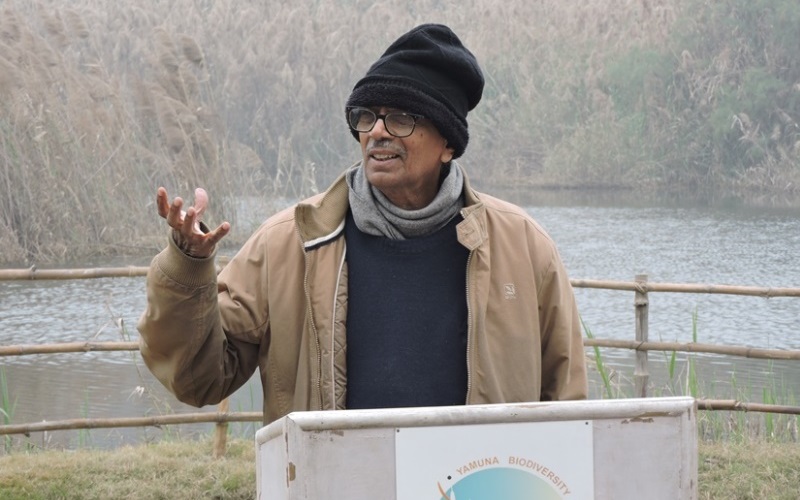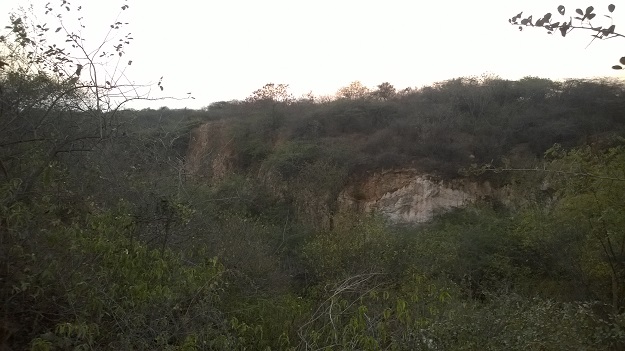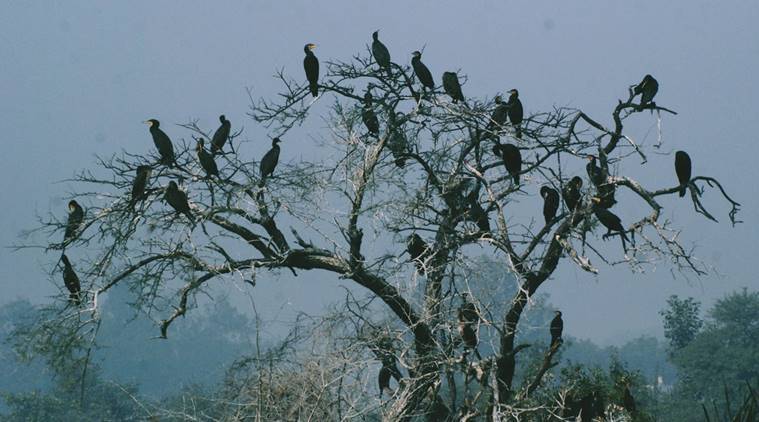
Biodiversity Parks in Delhi gives 85% to 95%pollution reduction
Professor C.R. Babu is the project in-charge, of The Centre for Environmental Management of Degraded Ecosystems (CEMDE) and the architects of the 7 biodiversity parks in Delhi. He says biodiversity parks differ from the urban forest. According to Prof. Babu biodiversity parks serves as the lungs of one the most polluted cities in the world. Biodiversity parks in Delhi are the first such initiatives anywhere in the world.
Scientist and legal experts from developed countries visit to know more about the biodiversity parks. Every biodiversity park in Delhi is created in more than 100 acres of land, in prime places inside Delhi. The aim is for restoring the lost native flora and fauna and to revive wetlands.
Professor Emeritus, C R Babu gave a 25 minutes audio talk to Lifestyle Today News (Malayalam) in English In a short time he gave an informative class about what is biodiversity parks, what is the benefits of the parks, how the parks were restored and what is the difference between Urban Forest and Biodiversity Parks. Here is an excerpt of the interview:
How you convert barren lands to biodiversity park?
Before I talk about the conversion of the barren lands to biodiversity parks, I think we should know the practical meaning of environment components, ecosystem, ecological integrity and sustainable development.
What are environment components?
Rock, water, living organisms constitute the environment of an area or organism or an object. These four components are known as natural resources, also known as environmental resources, also known as environmental components.
What is Ecosystem?
These environmental components in a given area interact within themselves as well as among themselves forming a complex system known as ecosystem.
What is ecological integrity?
It is these interactions among the four components that contribute to the ecological integrity of the ecosystem leading to sustainable development.
What is sustainable development?
Continuous interaction among the four components of the environment leading to continuous generation of ecosystem or ecological services to the humans. The ecosystem services rendered by the ecosystem is essentially regulated biodiversity. Biodiversity component is the key component providing ecological services to humanity.
Biodiversity parks is a unique landscape of wilderness, where ecological assemblies of native species in the form of biological communities all recreated on marginal or degraded land measuring about few hundred acres.
What are the ecosystem services provided by biodiversity?
Different ecosystem services are presently classified into various four categories. Firstly, the food that we take, the water that we drink, the shelter where we live, the clothes that we wear, the drugs that we take for disorders and fuel that we use for cooking. All derived from biodiversity and ecosystems.
Secondly, Life supporting services like Nutrient cycling, soil development and primary productivity. In the absence of these, no life exists in the biosphere.
In Idukki the native biodiversity is lost. There was an excellent grassland which generated a huge amount of water and vegetation. All of them have disappeared and been replaced by cultivated species like ginger, cardamom, banana and other commercial crops.
Thirdly, you have regulatory services like climate regulation, disease regulation, flood regulation, drought regulation and water purification. For example, water purification is essentially done by the biodiversity within the ecosystem.
Finally, we have cultural services which include recreation, education, ascetic, spiritual values, and conservation. Also these ecosystem services contribute to human well being.
What is happening to these ecosystems and biodiversity?
Take for instance, Idukki. In Idukki district you have only cultivated plants. The native biodiversity is lost. There was an excellent grassland which generated a huge amount of water and vegetation. All of them replaced by cultivated species like ginger, cardamom, banana and other commercial crops. It resulted in biodiversity loss.
Now if you come down to the urban areas City of Mumbai, Delhi, Kolkata and Chennai, you find the urbanization has wiped out the natural heritage of the area from the developmental matrix. This has happened in the past, is happening now and it will happen in the future. Many great civilizations perished because they caused ecological disruptions in the ecosystem.
Many great civilizations perished because they caused ecological disruptions in the ecosystem.
How to bring back lost biodiversity or Natural Heritage in a barren landscape or divided landscapes made by human beings, to provide those ecological services listed above?
Now this is a challenge to recreate the lost biodiversity in the urban development Matrix. We evolved for the first time the concept of biodiversity parks in Delhi and and the world. It was implemented for the first time in Delhi in joint collaboration with Delhi Development Authority and the Center for Environmental Management Degradation System where I work with a group of scientists. Today DDA has established 7 biodiversity parks spreading on an area of 3000 acres in prime landscapes of Delhi, working to bring back the lost natural heritage of Delhi.
Biodiversity parks serve as:
- a filter to reduce air pollution Hazard
- store and recharge the rain water
- serves to fix carbon dioxide both in the soil and biomass leading to climate resilience in cities.
So biodiversity parks have all these important features and the reason why the concept of biodiversity parks has been accepted and implemented across the country.
What is a biodiversity parks?
Biodiversity parks is a unique landscape of wilderness, where ecological assemblies of native species in the form of biological communities all recreated on marginal or degraded land measuring about few hundred acres. Biodiversity parks are nature reserves of the area and preserve natural heritage and have educational, cultural, and conservation values. And also promote environmental sustainability of the city and also provide resilience to the climate.
Today DDA has established 7 biodiversity parks spreading on an area of 3000 acres in prime landscapes of Delhi, working to bring back the lost natural heritage of Delhi.
Difference between biodiversity parks and urban Woodlands
Urban Woodlands are not ecosystems. They represent a few woody trees. Whereas biodiversity parks represent a wide range of forest ecosystems which provide a wide range of ecological services. I have a three storied forest. which has a ground layer, a middle layer and a top layer. In the urban forestry you have only few trees, mostly of exoticas, planted by the forest department, and such urban Woodlands would not provide the necessary ecological services to the city. It has been demonstrated very clearly.
What do biodiversity parks represent?
We have two very good functional biodiversity parks, Yamuna and Aravali Biodiversity parks, which have been visited by almost everybody across the world including the supreme court judges from the United States.
Yamuna biodiversity park was sodic, inactive, and impossible to grow any plant, except one sal bush. From such habitat we bought a luxuriant plant community which has reached to height of about 45ft canopy. The canopy is closed.
Urban Woodlands are not ecosystems. They represent a few woody trees.
First we planted native saplings but none of them survived. We used some native grasses which changed the pH from 14 to 7. Along with few soil organic amendments, we see that our plants communities have attained today to a height of about 45ft with a three storied stratification providing a wide range of ecological services to the city.
We used the poignant species that go in the top layer. Middle layer I need shade, so unless the top layer grows to a certain extent I cannot grow the middle layer. There vicious plants will come on their own once you are done.
we developed plant communities, many animal communities arrived on their own. We have wild boars which were seen in Delhi about 150 years ago. Leopards also came and stayed in the park for about 31 days. Our biodiversity park had a full functional ecosystem including plants, animals and so on.
The percentage of pollution reduction is from 85% to 95%.
How many species do you have across the biodiversity park?
We have around 3000 species of plants and animals living in some 100 biological communities.
How Aravalli Biodiversity park was restored
It was nothing but a composure of mining pits of different size, and different shapes and the depth is often 100 meters. Such a mine place where nothing grows we restored it back to a luxuriant Aravali forest community representing something like 75 species. Many of the species, extremely rare and threatened, requires protection. Such species get protection in the Aravalli Biodiversity park. In many of the biodiversity parks the sewage is discharged into the water bodies from the neighboring area.
What we do with the sewage?
If I had put a Sewage Treatment Plant, 1 million liters per day will cost 5 crores and maintenance cost will be few lakhs. And I cannot do that. We developed a nature-based solution, a ‘constructed wetland system’. Particularly, the integrated constructed wetland system where the oxidation and filtration zone integrate with the constructed wetland which contains species.
And the net result is that the water treated has the same quality as that of the river. For eg. The COD (Chemical Oxygen Demand) reduces from 80 mg per liter to almost less than 4 mg per liter.
The percentage of pollution reduction is from 85% to 95%. This kind of reduction you cannot except in even extremely expensive constructed wetland systems. The problem in a cross structured wetland system is your need to maintain it, you need to clear it periodically. You need some manpower to sustain it. But you compare this with the cost of STP that is many times higher than that. Our biodiversity parks also include the treatment of waste water.
The present rate of extinction is two species for every 10,000 species for 100 years.
What about the Fauna in the biodiversity park?
Our biodiversity parks have excellent wetlands. These wetlands have not only attracted thousands of migratory birds from various countries during migration but store large amounts of monsoon water in these water bodies and recharge the groundwater. One wetland, measuring about 100 acres, stores about 500 million gallons of flood water every year. The wetland recharges the groundwater which local communities use for preparing food.
How will the communities participate in the restoration of barren lands into biodiversity parks?
You need committed people. With commitment and single motivation, that I must bring the degraded ecosystem back to its original state so that it will provide services leading to sustainable development.
Are the development works in the urban areas sustainable?
What we are doing is not sustainable development. We are clearing the forest. What could be the impact of clearing the forest. In this process we are losing ecological integrity. That is resulting in the transfer of zoonotic diseases through the viruses to the human being. 99% of the zoonotic viruses are waiting to be transferred to human beings.
I have told the Chief Minister of Delhi, that the only way to address the air pollution problem in the cities of the country is to develop a series of vegetation buffers.
B. R Babu
If we continue to destroy our natural ecosystem in the name of development activities we may face large scale ecological catastrophe. It will lead to mass extinction. We are living in the age of mass extinction. The present rate of extinction is two species for every 10,000 species for 100 years. According to some conservation estimates by conservationists thousands of species are becoming extinct. The extinction is both in the marine ecosystem and the thrust ecosystem and river ecosystem.
How biodiversity parks would help in mitigating the air pollution?
The biodiversity parks have different forest communities with a broad leaves species, and it is three storied. You have a ground, a middle and a top. The turbulence of the pollution carrying air, when vehicles move, generates two trajectories. One is at the bottom and second is at the top. From the top it passes through the top canopy and comes on to the bottom. In the bottom the trajectories will go up. In this process every unit of air carrying pollutants is completely filtered by the biodiversity parks.
Humus is the permanent storage of Atmospheric Carbon. The atmospheric carbon which is released by various activities is permanently stored. This process does not happen in urban Woodlands. This happens in a three storied forest ecosystem of biodiversity parks.
National Green Tribunal (NGT) and the high court recommend these biodiversity parks as a part of rejuvenation of the rivers.
I have told the Chief Minister of Delhi, that the only way to address the air pollution problem in the cities of the country is to develop a series of vegetation buffers.
How are biodiversity parks contributing to climate change?
The biodiversity parks have a wild huge standing biomass in the form of stems, leaves and flowers. And this standing biomass has a large amount of carbon. It is stored and it will never return to the atmosphere. Also a substantial amount of the material gets converted into humus in the soil. Consequently the humus is the permanent storage of Atmospheric Carbon. Thereby the atmospheric carbon released is permanently stored. And this process happens in a three storied forest ecosystem of biodiversity parks and not in urban forests.
To conclude
Biodiversity parks have become a global model for environment sustainability and climate resilience. So, National Green Tribunal (NGT) and the high court recommend these biodiversity parks as a part of rejuvenation of the rivers. For instance National Mission for Clean Ganga has approved establishment of four biodiversity parks in UP along the Ganges. In another example, the pollution in Varuna and Assi rivers are removed as a part of development of two biodiversity parks.
Our biodiversity parks serve as a hub for promoting environmental education among the students. More than 0.25 million students every year take their practical environment education from our biodiversity parks. A nature education officer takes them in groups and explains how ecosystems function, how nature works.
Ayurvedic Covid Drug
The Delhi Pharma Varsity developed a drug “Coroquil-Zn, for Covid treatment. Interestingly, it is on the verge on getting a nod from Ayush. The ingredients of edible plants for the drug to treat Covid-19 identified by Prof C.R. Babu.








I discovered your blog site on google and check a few of your early posts. Continue to keep up the very good operate. I just additional up your RSS feed to my MSN News Reader. Seeking forward to reading more from you later on!…
Some truly nice and utilitarian information on this internet site, too I think the design contains fantastic features.
I just like the helpful information you supply for your articles. I’ll bookmark your blog and check again here regularly. I am reasonably sure I will be told many new stuff right here! Best of luck for the next!
I reckon something genuinely interesting about your blog so I bookmarked.
I must convey my love for your generosity supporting all those that must have help on that theme. Your very own commitment to passing the message across ended up being especially interesting and have continuously enabled guys like me to reach their endeavors. Your own valuable guidelines means this much a person like me and a whole lot more to my colleagues. With thanks; from all of us.
Lovely just what I was looking for.Thanks to the author for taking his clock time on this one.
I like the helpful info you provide in your articles. I will bookmark your blog and check again here regularly. I am quite certain I will learn a lot of new stuff right here! Good luck for the next!
Someone essentially lend a hand to make severely articles I would state. That is the first time I frequented your web page and up to now? I amazed with the research you made to make this actual put up incredible. Excellent task!
I am constantly browsing online for ideas that can assist me. Thank you!
Yesterday, while I was at work, my sister stole my apple ipad and tested to see if it can survive a 25 foot drop, just so she can be a youtube sensation. My apple ipad is now destroyed and she has 83 views. I know this is entirely off topic but I had to share it with someone!
Please let me know if you’re looking for a author for your blog. You have some really great articles and I think I would be a good asset. If you ever want to take some of the load off, I’d absolutely love to write some material for your blog in exchange for a link back to mine. Please send me an e-mail if interested. Thank you!
I was studying some of your articles on this site and I believe this site is very instructive! Keep on putting up.
To the lifestyletodaynews.com administrator, Your posts are always well-written and easy to understand.
Hello lifestyletodaynews.com webmaster, Thanks for the educational content!
Hello lifestyletodaynews.com owner, You always provide great examples and case studies.
To the lifestyletodaynews.com webmaster, You always provide useful links and resources.
Dear lifestyletodaynews.com owner, Thanks for the well written post!
Hello lifestyletodaynews.com owner, Thanks for the well-researched and well-written post!
To the lifestyletodaynews.com owner, You always provide clear explanations and step-by-step instructions.
Dear lifestyletodaynews.com webmaster, Good work!
Nice post. I was checking continuously this blog and I am impressed! Very useful information specifically the last part 🙂 I care for such info a lot. I was looking for this certain information for a long time. Thank you and best of luck.
Hi lifestyletodaynews.com owner, You always provide useful tips and best practices.
Dear lifestyletodaynews.com admin, Your posts are always well-received by the community.
Dear lifestyletodaynews.com owner, Your posts are always well presented.
To the lifestyletodaynews.com administrator, Excellent work!
To the lifestyletodaynews.com admin, Well done!
To the lifestyletodaynews.com administrator, Your posts are always informative and up-to-date.
Dear lifestyletodaynews.com owner, Your posts are always well-referenced and credible.
Hello lifestyletodaynews.com admin, Your posts are always well-referenced and credible.
Hello lifestyletodaynews.com admin, Thanks for the well-presented post!
Hello lifestyletodaynews.com admin, Your posts are always well-structured and logical.
To the lifestyletodaynews.com administrator, You always provide valuable feedback and suggestions.
To the lifestyletodaynews.com webmaster, Your posts are always informative and well-explained.
Dear lifestyletodaynews.com webmaster, Your posts are always a great read.
Hello lifestyletodaynews.com webmaster, Your posts are always well-formatted and easy to read.
I simply could not go away your web site prior to suggesting that I actually enjoyed the usual info a person supply to your visitors? Is gonna be again often in order to check up on new posts.
I was reading through some of your blog posts on this site and I believe this website is really instructive! Retain posting.
After all, what a great site and informative posts, I will upload inbound link – bookmark this web site? Regards, Reader.
Hello lifestyletodaynews.com administrator, Your posts are always well-formatted and easy to read.
I?¦ve been exploring for a little for any high-quality articles or blog posts on this sort of area . Exploring in Yahoo I eventually stumbled upon this website. Reading this info So i?¦m glad to exhibit that I have an incredibly just right uncanny feeling I discovered just what I needed. I so much undoubtedly will make sure to don?¦t disregard this website and give it a look on a constant basis.
Dear lifestyletodaynews.com owner, Your posts are always well-formatted and easy to read.
Hello there! This is kind of off topic but I need some guidance from an established blog. Is it difficult to set up your own blog? I’m not very techincal but I can figure things out pretty quick. I’m thinking about making my own but I’m not sure where to start. Do you have any ideas or suggestions? Thank you
Briansclub . Briansclubcm.co Consultant helped me to reach my business goals.
Hi lifestyletodaynews.com owner, Your posts are always well researched.
To the lifestyletodaynews.com administrator, Thanks for the educational content!
Hi lifestyletodaynews.com administrator, Thanks for the great post!